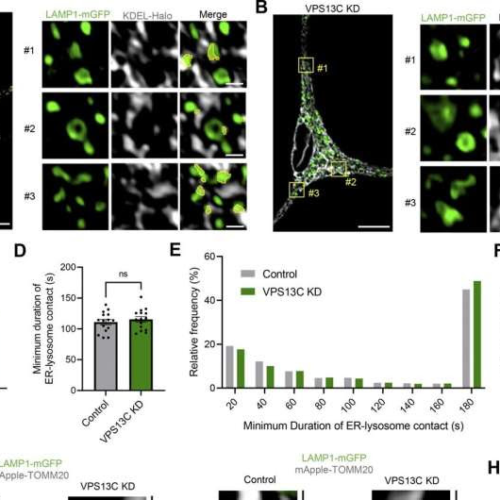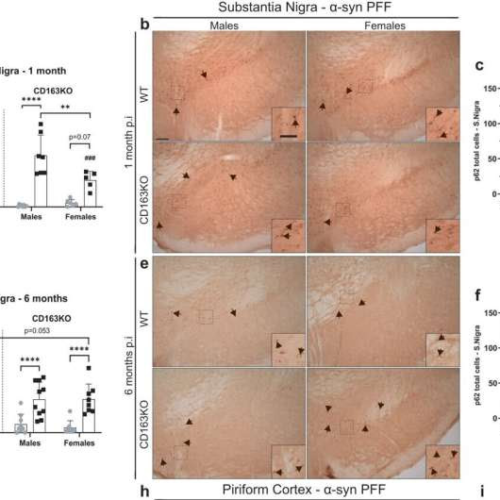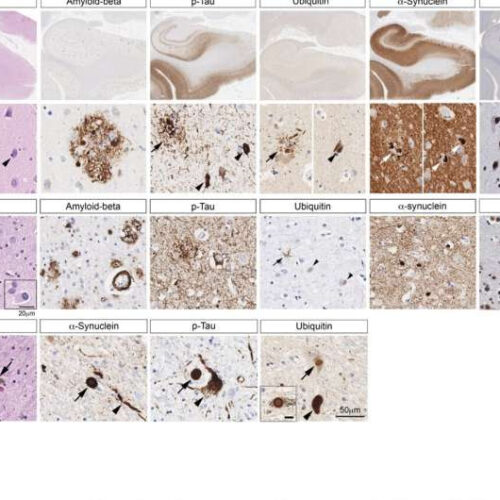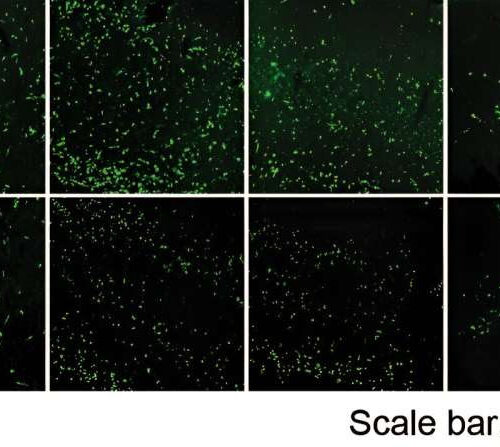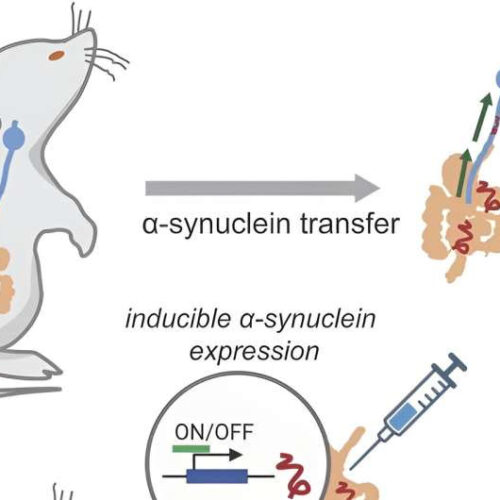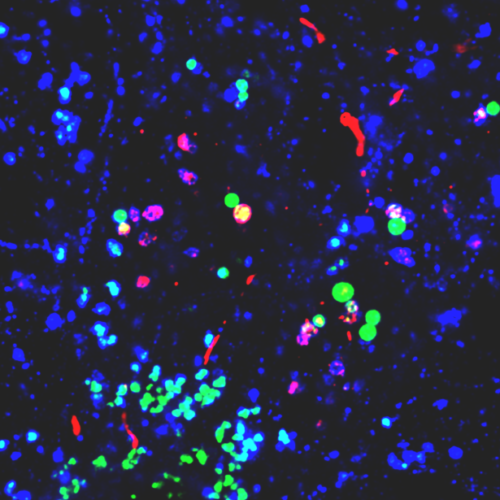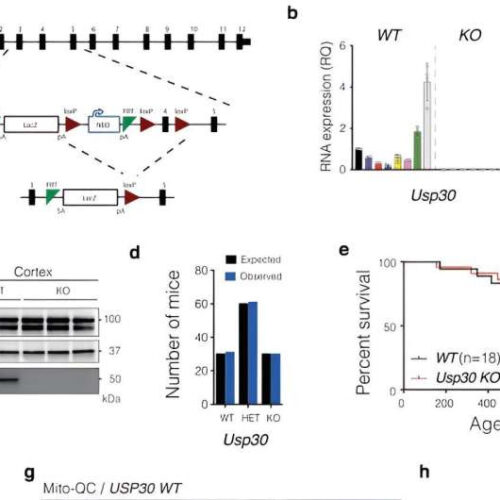Three more pesticides commonly used in the United States have now been linked to heightened Parkinson’s risk. Image credit: Abstract Aerial Art/Getty Images.Parkinson’s disease prevalence is growing fast, and similar to some other neurological conditions, its causes are unclear.The potential impact of chemicals that are toxic to neurons in the part of the brain affected...
Category: <span>parkinsons</span>
Mutation provides insights into mechanisms of neurodegeneration in Parkinson’s disease
by Olivia Dimmer, Northwestern University sites in iPSC-derived dopaminergic neurons. (A and B). Credit: Journal of Cell Biology (2024). DOI: 10.1083/jcb.202304042A mutated protein expressed in lysosomes may contribute to Parkinson’s disease, according to a new Northwestern Medicine study published in the Journal of Cell Biology. Parkinson’s disease is the second-most common neurodegenerative disorder in the...
A newly discovered receptor appears to protect against Parkinson’s disease—but only in females
by Marina Romero-Ramos, Aarhus University Differential expression of p62/SQSTM1 autophagy marker in the substantia nigra, piriform cortex and amygdala after α-syn PFF injection. Bar graphs with individual points illustrate the total number of p62+ cells in the SN at a 1 and d 6 months p.i. b Representative images of p62/SQSTM1 immunostaining in α-syn PFF animals...
Targeting the mRNA of ‘undruggable’ proteins in the fight against Parkinson’s disease
by Justin Jackson , Medical Xpress Pixabay/CC0 Public DomainResearchers at the Scripps Research Institute, Florida, have developed a new method to counteract α-synuclein protein levels by targeting the mRNA that forms them. The strategy unlocks many research doors with potential therapeutic approaches for addressing neurodegenerative diseases. In a paper, “Decreasing the intrinsically disordered protein α-synuclein...
Research reveals how a malfunctioning mechanism can lead to Parkinson’s disease
by Ruhr-Universitaet-Bochum NEMO is associated with pathological protein aggregates. Credit: Nature Communications (2023). DOI:10.1038/s41467-023-44033-0 Researchers have identified a mechanism that promotes the breakdown of harmful protein deposits. If it malfunctions, it can lead to Parkinson’s disease. NEMO, a protein that is primarily associated with signaling processes in the immune system, prevents the deposition of protein aggregates...
New findings about key pathological protein in Parkinson’s disease open paths to novel therapies
by Johns Hopkins University School of Medicine Second row shows how rapamycin dampens alpha-synuclein protein production in a magnified area of a mouse brain. Credit: Mohammed Khan and Ted Dawson, Johns Hopkins Medicine A so-called pathological protein long associated with Parkinson’s disease has been found in a new study to trigger cells to increase protein synthesis,...
New evidence suggests link between gut health and Parkinson’s disease
by Alexis Porter, Duke University Credit: JCI Insight (2023). DOI: 10.1172/jci.insight.172192 While previous studies suggest Parkinson’s disease begins in the gut and spreads to the brain, how the process occurs has been elusive. Now, a pre-clinical study led by Duke Health researchers provides new evidence that bolsters the gut-brain connection. Reporting Dec. 8 in the journal...
Risk factors for the development of freezing of gait in Parkinson’s disease patients
By Dr. Chinta SidharthanDec 6 2023Reviewed by Lily Ramsey, LLM In a recent study published in the journal Npj Parkinson’s Disease, researchers meta-analyzed data obtained from a systematic review to understand the risk factors that influence the development of freezing of gait or FOG — a debilitating condition that occurs in some Parkinson’s disease patients....
Nanoplastics Promote Conditions for Parkinson’s Across Various Lab Models
DURHAM, N.C. – Nanoplastics interact with a particular protein that is naturally found in the brain, creating changes linked to Parkinson’s disease and some types of dementia. In a Duke-led study appearing Nov. 17 in Science Advances, the researchers report that the findings create a foundation for a new area of investigation, fueled by the...
Researchers halt progression of Parkinson’s disease in mouse model
by Jacqueline Mitchell, Beth Israel Deaconess Medical Center Generation and characterization of Usp30 KO mice. a Schematic of gene targeting to generate the Usp30 KO mice. b Bar graph shows the levels of Usp30 gene expression in different tissues in Usp30 WT and KO mice (n = 5 for brain, n = 4 for testis, n = 3 for all other tissues)....


